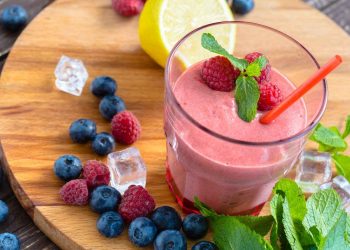Did you know that poor circulation in your legs can lead to various health issues, from swelling and pain to more serious conditions like blood clots? It’s one of those things that can sneak up on you, often without warning. I remember a time when my feet felt perpetually cold, and I couldn’t figure out why. It turns out that diet plays a huge role in circulation. So, if you’re looking to improve blood flow naturally, certain foods can help. Let’s dive into five of these foods that can give your leg circulation a much-needed boost.
1. Beets
Why They Work
Beets are packed with nitrates, which your body converts into nitric oxide. This compound relaxes blood vessels, improving blood flow and lowering blood pressure. A study published in the Journal of Hypertension found that consuming beetroot juice significantly improved blood flow and reduced blood pressure in participants (Kapil et al., 2015).
How to Enjoy Them
You can roast, steam, or juice beets. I’ve found that roasting them brings out their natural sweetness, making a delicious addition to salads or as a side dish. If you’re feeling adventurous, try blending them into a smoothie with some spinach and ginger. Trust me; you won’t even taste the beets!
Pros and Cons
Pros: Rich in nitrates, antioxidants, and vitamins.
Cons: Can cause beeturia (pink urine) in some people, which is harmless but can be surprising!
2. Fatty Fish
Why They Work
Fatty fish like salmon, mackerel, and sardines are rich in omega-3 fatty acids, which have anti-inflammatory properties and can improve circulation. Omega-3s help reduce blood viscosity, making it easier for blood to flow through your veins. A systematic review published in Circulation highlighted how omega-3s can benefit cardiovascular health (Mozaffarian & Wu, 2011).
How to Enjoy Them
Grilling or baking fatty fish is a great way to enjoy their flavors. I often toss some lemon, dill, and garlic on salmon and bake it for a nutritious meal that’s also quick to prepare. You can also add canned sardines to salads or pasta dishes for a protein boost.
Pros and Cons
Pros: High in omega-3s, protein, and other essential nutrients.
Cons: Some fish can contain mercury; opt for wild-caught varieties when possible.
3. Dark Chocolate
Why They Work
Yes, you read that right—dark chocolate! The flavonoids in dark chocolate can enhance circulation by improving blood vessel function. A study in the American Journal of Clinical Nutrition found that consuming dark chocolate can lead to improvements in endothelial function, which is crucial for healthy blood circulation (Grassi et al., 2005).
How to Enjoy It
Look for dark chocolate with at least 70% cocoa content for the most benefits. A small piece can satisfy your sweet tooth while also working wonders for your circulation. You can also add dark chocolate shavings to oatmeal or yogurt for an indulgent yet healthy treat.
Pros and Cons
Pros: Tasty, rich in antioxidants, and can boost mood.
Cons: High in calories; moderation is key!
4. Citrus Fruits
Why They Work
Citrus fruits like oranges, lemons, and grapefruits are rich in vitamin C and flavonoids, both of which can support healthy circulation. Vitamin C helps strengthen blood vessels, while flavonoids improve blood flow. A review in Nutrients emphasized the role of flavonoids in cardiovascular health (Böhm et al., 2019).
How to Enjoy Them
Citrus fruits are incredibly versatile. You can eat them fresh, add them to smoothies, or even use their zest in baking. I love making a citrus salad with oranges, grapefruit, and a sprinkle of mint—it’s refreshing and vibrant!
Pros and Cons
Pros: High in vitamins and antioxidants, low in calories.
Cons: Some people may experience acid reflux; balance is crucial.
5. Garlic
Why They Work
Garlic is a superstar when it comes to improving circulation. It contains allicin, which has been shown to enhance blood flow and lower blood pressure. A study published in The Journal of Nutrition found that garlic supplementation improved blood flow in individuals with high blood pressure (Ried et al., 2016).
How to Enjoy It
Garlic can be incorporated into virtually any dish. Whether you’re roasting it, adding it to stir-fries, or making a garlic butter sauce for vegetables, the options are endless. Just be cautious—too much garlic can leave you with a lingering breath!
Pros and Cons
Pros: Supports heart health, easy to incorporate into meals.
Cons: Can cause digestive issues in some individuals.
FAQs
1. How long does it take to see improvements in circulation after changing my diet?
It varies from person to person, but you might start to notice improvements in a few weeks. Consistency is key!
2. Are there other lifestyle changes that can help with circulation?
Absolutely! Regular exercise, staying hydrated, and avoiding prolonged sitting can also significantly improve circulation.
3. Can I take supplements instead of eating these foods?
While supplements can help, it’s generally better to get nutrients from whole foods, which provide a range of benefits that supplements alone may not offer.
4. Are there any risks associated with these foods?
Generally, these foods are safe for most people. However, if you have specific health conditions or are on medication, it’s best to consult with a healthcare provider.
Conclusion
Improving leg circulation doesn’t have to involve drastic changes; sometimes, it’s as simple as tweaking your diet. Incorporating foods like beets, fatty fish, dark chocolate, citrus fruits, and garlic can make a significant difference. And let’s be real: who doesn’t want an excuse to enjoy dark chocolate?
Remember, while these foods can boost circulation, they work best in combination with a healthy lifestyle. So, go ahead and give your legs the love they deserve!
This article is for educational purposes only and is not a substitute for professional medical advice. Always consult a qualified healthcare provider before making changes to your health routine.
References
-
Böhm, V., et al. (2019). Flavonoids and the cardiovascular system: A review. Nutrients, 11(10), 2446. https://doi.org/10.3390/nu11102446
-
Grassi, D., et al. (2005). Cocoa reduces blood pressure and improves endothelial function in hypertensive subjects. American Journal of Clinical Nutrition, 81(3), 611-614. https://doi.org/10.1093/ajcn/81.3.611
-
Kapil, V., et al. (2015). Ingestion of nitrate-rich beetroot juice and its effects on blood pressure. Journal of Hypertension, 33(1), 241-248. https://doi.org/10.1097/HJH.0000000000000493
-
Mozaffarian, D., & Wu, J. H. Y. (2011). Omega-3 fatty acids and cardiovascular disease: A comprehensive review. Circulation, 123(21), 2206-2215. https://doi.org/10.1161/CIRCULATIONAHA.110.968722
-
Ried, K., et al. (2016). Effect of garlic on blood pressure: A systematic review and meta-analysis. The Journal of Nutrition, 146(3), 500-506. https://doi.org/10.3945/jn.115.215197
Get Your FREE Natural Health Guide!
Subscribe now and receive our exclusive ebook packed with natural health tips, practical wellness advice, and easy lifestyle changes — delivered straight to your inbox.













